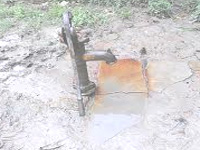
Bengaluru ground water high in carcinogens
The permissible limit for nitrates is 40 milligrams a litre, but in most areas, the presence of nitrates ranges between 45 and 100 mg/ litre. Ground water in many parts of Bengaluru urban and rural

The permissible limit for nitrates is 40 milligrams a litre, but in most areas, the presence of nitrates ranges between 45 and 100 mg/ litre. Ground water in many parts of Bengaluru urban and rural
When ammonia increases in water, the demand for chlorine goes up. It is used as a disinfectant to kill pathogenic organisms in drinking water. But ammonia consumes a large quantity of chlorine to oxidize to form chloramines and disinfection becomes ineffective. <br><br> Higher doses of chlorine in water with organic matter leads to the formation of disinfection byproducts like chloroform, bromoform etc. These are carcinogenic and cause problems related to liver, kidney and the nervous system. There are no standards for disinfection byproducts in India. <br>
Excessive use of nitrogenous fertilizers damages the environment. Emission of nitrous oxide from such fertilizers is a major source of agricultural greenhouse gases.

<font class="UCASE">the</font> 200 million global consumers of aspartame, a sweetener, could be at high risk of contracting cancer, claims a recent study. Conducted by researchers from Cesare Maltoni Cancer Research Center of the European Ramazzini Foundation of Oncology and Environmental Sciences, a non-governmental organisation in Italy, the study shows the sweetener can cause cancer in rats at levels approved for human consumption. This is the first experimental study to link aspartame to cancer and is scheduled for publication in <i>Environmental Health Perspectives</i>. <br>